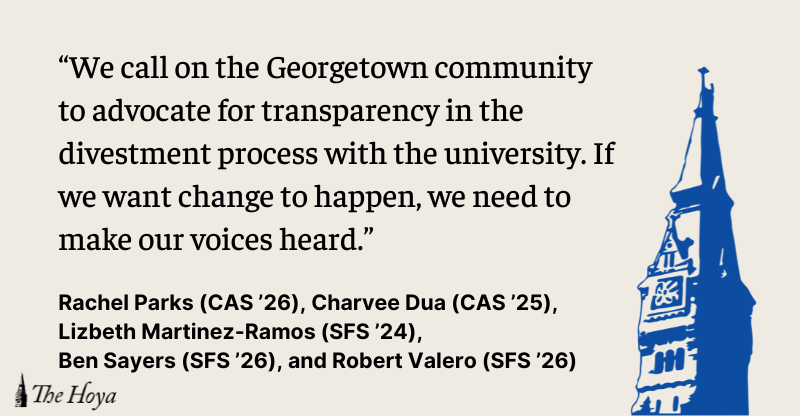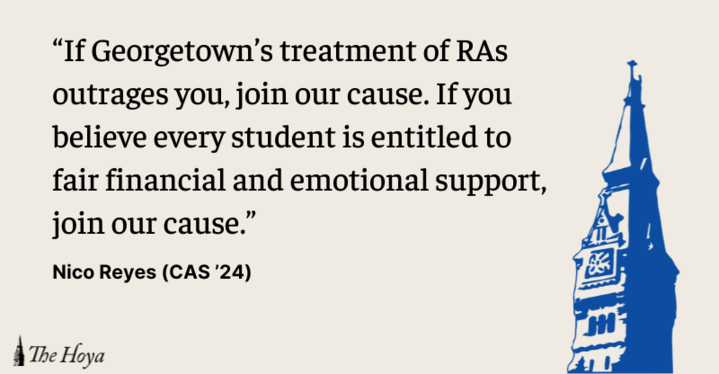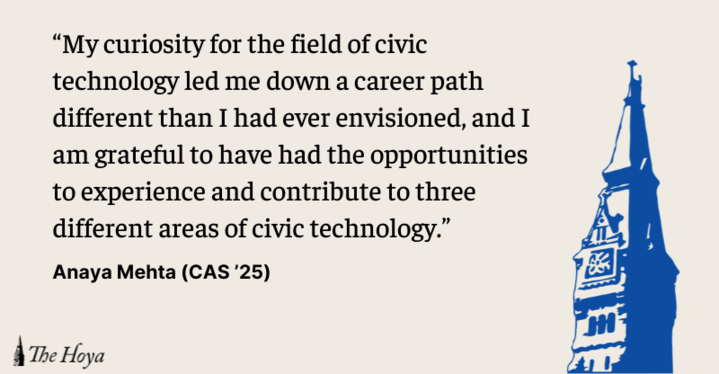 On May 19, 2012, I will graduate from two Georgetowns. The first is the one that everyone knows about. This is the Georgetown of the International Relations Club, The Corp and The Hoya. It is the one that is sold in brochures in the admissions office and promoted during GAAP weekends and New Student Orientation.
On May 19, 2012, I will graduate from two Georgetowns. The first is the one that everyone knows about. This is the Georgetown of the International Relations Club, The Corp and The Hoya. It is the one that is sold in brochures in the admissions office and promoted during GAAP weekends and New Student Orientation.
The second Georgetown is a distinct subset of the original one. This Georgetown is found in the Center for Multicultural Equity and Access, in the Black Student Alliance and throughout Hoya Saxa weekend. As a member of Georgetown’s black community, a large amount of my time has been spent serving this second Georgetown.
My graduation from two Georgetowns is the result of a sharp divide that exists here. In the beginning of my freshman year, I, like many freshmen, developed close friendships with a number of students on my floor. The friends that I made freshman year were from all walks of life; we represented a number of states, races and social classes. Although we didn’t know it then, Georgetown was preparing us for very different experiences.
Today, many of those friends from freshman year are a part of “mainstream” Georgetown. Their experiences here over the last few years have been similar to what one would expect of a typical Georgetown student. They have committed themselves to the organizations with which we are all very familiar, and they have done very well in these groups. While I continue to maintain friendships with many of my freshman-year friends, there is no doubt that, in many respects, I attended an almost entirely different school than many of them did.
Students of color at Georgetown are saddled with an unsettling burden. We must find a way not only to support the organizations and programs that are essential to enhancing the presence and experience of student minorities, but also to integrate ourselves into the larger campus community. The extent to which a minority student balances these different worlds often defines his university experience. For some, movement between these worlds is easy, but for others, striking a balance is more difficult.
All of this brings me to understanding the importance of diversity. Georgetown must continue to encourage its students to truly step into others’ shoes. Far too often, our discussions about diversity, as one of my great professors stated, are a “no-fault remedy for an unacknowledged crime,” and far too often, our engagement with this issue rests only on intermittent service or twice-annual attendance at cultural shows. I believe that our values as a Catholic and Jesuit university should push us to engage more deeply with one another.
Many of my friends in the “mainstream” Georgetown have at times seemed unable to understand this divide. They believe that all Georgetown organizations are open and inclusive and that minorities simply “self-segregate.” After four years on both sides of the fence, I can confidently say that claims of self-segregation are patently false. Not only do minorities interact with the general student body in our dorms, classes and cafeteria, but they are also expected to know all about the “mainstream” world without receiving reciprocal interest or respect for their own.
In my own time at Georgetown, I have had the privilege of being chair of the Student Commission for Unity, a campus group dedicated to enhancing community dialogue and diversity. The SCU’s mission was to create a community that “actively pursue[d] our Jesuit ideals with all deliberate speed.” Guided by Georgetown’s mission statement, we explored the concepts of faith, culture, race, socioeconomic status and justice. After significant research and dialogue, we created a series of recommendations that we thought could serve as a vehicle for change. Today, I still believe that initiatives such as those developed by the SCU provided a tremendous opportunity to find ways to move our talks about diversity into action.
As a soon-to-be alum, I truly hope that Georgetown students will begin to bridge this divide. The experience of minority students on campus is as much a part of the Georgetown experience as any other. In order to truly reach our potential, diversity must not be confined to one-off programs or specific classes. After four years of attending both Georgetowns, I am hopeful that future students will be able to achieve an equally rich experience — but with the feeling that they are attending just one.
Let’s begin to bridge the divide.
RYAN WILSON is a senior in the College. He is a former chair of the Student Commission for Unity and a founder of the College Awareness Program.














